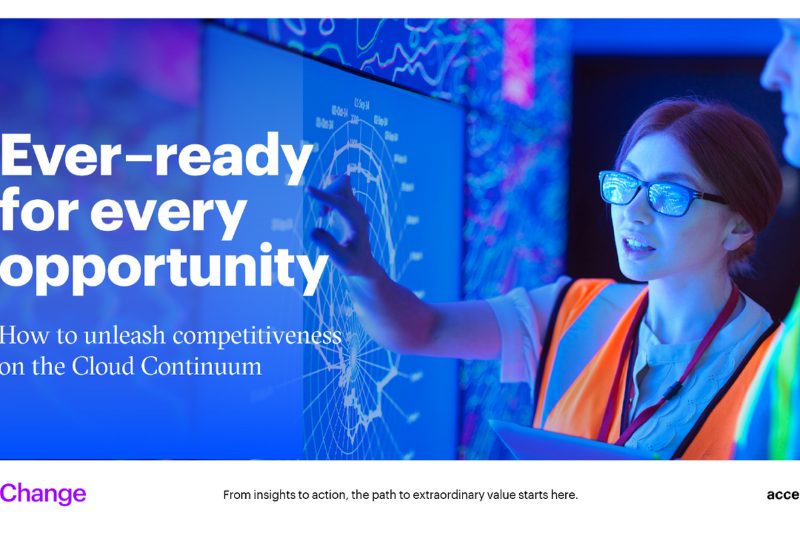A new study by Accenture identifies a separate group of businesses that treats the cloud as a new operating model for their constant reinvention. These businesses take advantage of innovative capabilities across the spectrum of the cloud – public, private and edge – and gain greater business value, beyond simply cost savings.
Based on a global survey of 4,000 high-ranking private and public sector executives, the study with the title “Ever-ready for Every Opportunity: How to Unleash Competitiveness on the Cloud Continuum“, explains why the transition to the cloud as a simple transfer of computing power- in the logic of a more economical and efficient data center – is restrictive. In practice, the myopic focus on cost savings can be a competitive disadvantage for organizations compared to those who take a holistic strategic approach.
The study also reveals that while businesses plan to move more than 2/3 of their workload to the cloud —on average over the next 3 to 5 years— only half will use the full capabilities of the cloud in its various forms to transform their daily business operations and modernize apps to meet their business needs.
Accenture calls cloud-leading businesses “Continuum Competitors.” These businesses—about 12-15% of the sample, depending on the geographic region—stand out as they expand their public cloud experience to the private and edge cloud level to transform their business operations. As a result, they achieve significant benefits from their ongoing commitment to the cloud and outperform the competition. According to the study, the ‘Continuum Competitors” are also much better positioned and prepared for future risks.
“The future competitiveness of a company depends on choosing the right type of cloud for the right applications and cloud-based services, such as artificial intelligence, edge computing, augmented reality and more, from across the spectrum and the implementation of the required advanced practices to utilize these technologies,” said Kostas Kampossioras, Technology Lead of of Accenture in Greece.
Unlike businesses that simply choose the cloud for cost savings and efficiency, “Continuum Competitors”:
-are two to three times more likely to innovate, automate and redesign their processes and activities.
-achieve a greater cost reduction – between 1.2x in North America and 2.7x in Europe – compared to businesses that focus mainly on data migration.
-aim to achieve more business and financial goals, such as customer growth and a faster go-to-market transition from their competitors.
-are up to three times more likely to leverage the cloud for at least two sustainability goals, such as using green energy, planning for lower energy consumption, and using servers more efficiently to reduce energy consumption.
Studying the use of the Cloud by “Continuum Competitors”, Accenture identified four successful approaches that apply to each organization:
1. Vision and goal-setting. A business must first develop a vision and strategy that clearly states its core values and future ambitions, identifies vulnerabilities, and classifies capabilities in relation to where the company is today and where it wants to go. But these strategies should take into account the ongoing evolution of cloud capabilities across the spectrum.
2. Establish cloud practices to support and develop technologies. Businesses need to combine the adoption of technology with disciplined practices that help change non-technological areas according to the pace of technological developments.Flexibility is a key feature of “Continuum Competitors” and is reflected in areas such as cloud-first applications, human resource transformation and experimentation with new technologies.
3. Accelerate innovation to provide exceptional experiences. “Continuum Competitors” put emphasis on one area: experience. They use a combination of human-centered design and cloud technologies – such as edge computing – to redesign the experiences that that offer and bring them closer to the points of interaction with their customers, partners and employees.
4. Sustained strategic commitment. Leadership must set business goals, set legitimate levels of risk and promote a culture of flexibility and growth. Businesses must also recognise the collective involvement of employees in the challenge: all employees, across the enterprise, must be informed of the ever-improving cloud capabilities and best practices.
Accenture’s “Ever-ready for Every Opportunity: How to Unleash Competitiveness on the Cloud Continuum” study comes at a time when businesses have been forced by the pandemic to provide their customers with unique experiences and serve them in new and virtual ways. A previous Accenture study found that companies that boosted their technological innovation during the pandemic are growing their revenue five times faster.


